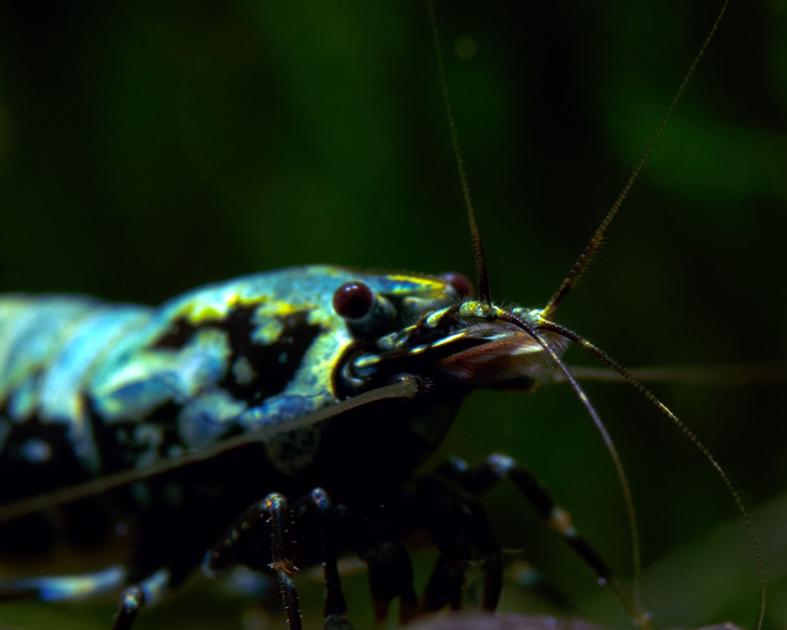Aquarium enthusiasts love the versatility and hardiness of Amano shrimp, making them a popular choice for many freshwater aquariums. Though their distinctive characteristics and peculiar reproduction process pique curiosity, questions about their breeding habits in a freshwater environment still persist. Let’s dive into the world of Amano shrimp and uncover some fascinating tidbits about their life cycle and reproduction process.
While Amano shrimp breeding in captivity is generally uncommon, there is indeed a unique process involved. It can be quite an arduous journey, but as an avid aquarist, you’ll find it gratifying. There’s nothing better than knowing every detail of the remarkable creatures that inhabit your aquarium for more responsible care.
Let’s embark on a journey of discovery about Amano shrimp reproduction, factors affecting their breeding habits, and techniques to enhance their breeding success in captivity. With a little effort and a lot of patience, you will find yourself fascinated with these remarkable creatures.
Can Amano Shrimp Breed in Freshwater?
Unfortunately, Amano shrimp cannot breed successfully in freshwater environments. They require a specific set of conditions that can only be found in a brackish water environment for their larvae to survive and develop into adults. However, this doesn’t mean it’s impossible to breed them in captivity; it simply requires additional effort and understanding of their life cycle.
Amano Shrimp Life Cycle and Reproduction Process
Understanding the life cycle and reproduction process of Amano shrimp is crucial to ensuring successful breeding in captivity. Let’s have a detailed look at each stage.
1. Mating
Amano shrimp typically mate when the female molts or sheds her exoskeleton. The male shrimp will latch onto her, and they will mate while swimming around the tank. After mating, the female will produce eggs.
2. Egg Carrying
Once the eggs are fertilized, the female carries them under her abdomen to protect them. The eggs will range between 200-3000 depending on the size of the female. The female shrimp will fan her eggs with her pleopods (swimmerets) to aerate them.
3. Larval Stage
After approximately 6 weeks, the eggs hatch and release the larval state of the shrimp. Unlike some other freshwater shrimp, Amano shrimp larvae require brackish water with a salinity of 12-15 ppt (parts per thousand) to develop into adults.
4. Metamorphosis and Acclimation
The larvae go through several stages of development, with each stage requiring different salinity and water conditions. Once the larvae metamorphose into their post-larval stage, they must gradually be acclimated back to freshwater conditions to survive and join the adult population.
Steps to Breed Amano Shrimp in Captivity
Amano shrimp breeding in captivity necessitates precise control over water conditions, temperature, and other crucial factors.
- Set up a separate breeding tank: The key to successful breeding is separating the mating pair and the larvae from the main tank.
- Induce molting: Increase the water temperature slightly and provide protein-rich food to stimulate molting.
- Introduce brackish water: Once the larvae hatch, transfer them to a brackish water environment with appropriate salinity for development.
- Provide appropriate food: Amano shrimp larvae require infusoria or rotifers as a food source during their larval stage.
- Gradual acclimation: As the shrimp reach their post-larval stage, slowly decrease the salinity to reintroduce them to freshwater conditions.
Caring for Your Amano Shrimp
To ensure an optimum environment for your Amano shrimp, consider the following aspects:
- Temperature: Maintain a stable temperature of 72-78°F (22-26°C).
- pH: Keep the pH level between 6.5 and 7.5.
- Tank size: A minimum of 10 gallons is suitable, but larger tanks are better.
Remember to provide hiding spots and ample plants for your Amano shrimp to feel safe and secure. Also, make sure to provide a well-balanced diet to keep them healthy and ready to breed.
FAQs
- Can Amano shrimp breed in freshwater?
No, they cannot breed successfully in freshwater as their larvae require brackish water for development. - Do Amano shrimp need to mate for the female to produce eggs?
Yes, the female Amano shrimp needs to mate with a male before she can produce fertilized eggs.
- How long does it take for Amano shrimp eggs to hatch?
It typically takes around 6 weeks for the eggs to hatch.
- What food should I provide for Amano shrimp larvae?
Amano shrimp larvae require infusoria, rotifers or finely crushed fish food during their larval stage.
- What is the recommended aquarium size for Amano shrimp?
A minimum of 10 gallons is suitable, but larger tanks are recommended for more space and stability.
Conclusion
Breeding Amano shrimp in freshwater is not possible due to their larvae requiring brackish water to develop properly. However, by understanding their life cycle, providing the proper environment, and carefully tending to their specific needs, it is possible to breed Amano shrimp in your aquarium. It may be challenging, but watching your population of Amano shrimp flourish and expand is truly a rewarding experience.

